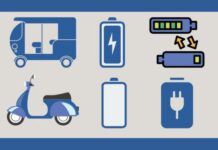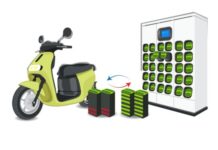As a country, India’s step of incorporating lithium-ion batteries into the power industry is reshaping its economics of energy storage. The proliferation of lithium-ion batteries has brought a revolution by powering renewable energy sources. The urge and need to produce sustainable and clean energy sources has increased their demand and continues to escalate. As per the latest report of the Indian Council of World Affairs, India imported 617 million units of lithium-ion batteries for $1.8 billion in 2022 having stated that India is one of the world’s largest importers of lithium-ion batteries. These investments have made India the fastest-growing RE capacity addition in the world.
However, to be self-efficient in this domain, India has started focusing on indigenous production. The country’s lithium-ion battery production capacity is expected to reach 150 Gigawatt hours by 2030, with 13% of total cell demand expected to be domestically sourced by then. Moreover, original equipment manufacturers (OEMs) are investing heavily in local cell manufacturing facilities, driven by the Indian government’s proactive stance on electrification through policies like the Production-Linked Incentive (PLI) scheme for advanced chemistry cell storage and the Faster Adoption of Manufacturing Electric Vehicles (FAME) scheme, which encourages domestic investments and strategic partnerships.
Leveraging the future of renewable energy
Climate change and global warming have compelled the world to transit from conventional sources of energy to renewable energy (RE) sources to set net zero emissions and bring a new green revolution. As the world shifts to cleaner energy sources, lithium-ion batteries play a vital role in storing energy, which are known for their high energy density, long life, and rapid charging.
According to the 2023 report by the Statista Research Department, the global demand for lithium-ion batteries will reach almost 4.7 terawatt-hours in 2030.
India has also been working to bring conventional sources of energy to daily life. India’s energy transition programme is at the top in the world. “India will achieve its 500 GW renewable energy target before 2030”, said RK Singh, the Union Power and New & Renewable Energy Minister.
How Lithium-ion batteries are reshaping the power industry
The lithium-ion battery production has experienced technological advancements over the years, which have significantly resulted in cost reduction and impacted the power industry in the following manner.
Raw materials
Lithium-ion batteries require specific raw materials such as graphite, nickel, and lithium. The cost of these materials impacts final production costs. Their price fluctuates, affecting overall battery costs. In recent times, battery prices have consistently declined, making energy solutions like electric vehicles more accessible to consumers. The falling prices result in better production, improved sales, and advanced battery chemistry.
Advanced manufacturing processes
Earlier, when the manufacturing processes were complex, they contributed to the high cost of production. After continuous advancements in the manufacturing processes, automation and other tools have helped in lowering the production cost over time. In the manufacturing process, recycling of the raw materials has also been introduced. This allows the manufacturers to recover essential metals like lithium, cobalt, and nickel; reducing the need for a new batch. As technology advances, more efficient production methods emerge, promoting a circular economy in the power industry.
Lifespan & Efficiency
Lithium-ion batteries usually have a lifespan of 20 years, depending on factors like operations, maintenance, and ambient conditions. Efficiency is a key operational parameter that impacts the economics of these BESS assets, as it measures the efficiency of converting stored chemical energy into usable electrical energy. Battery efficiency is also crucial for energy arbitrage revenue strategies, as it impacts the charge and discharge prices needed to generate cash flow. Lithium-ion batteries are approximately 95% efficient, but factors like internal resistance, self-discharge, environmental factors, and chemical reaction failure can affect their efficiency.
Conclusion
Lithium-ion batteries are considered the best tools in the power industry to draw a transition from non-renewable sources of energy to renewable ones. The longer life cycles and the high density of energy make them suitable for energy storage in comparison to other battery technologies. The economy of lithium-ion batteries is driven by technological advancements, increasing the demand for electric vehicles and other energy storage technologies. They are the assets in bringing the greener variation, enabling the global shift to cleaner energy resources. With more research, the technologies can be developed, decreasing the cost per unit and making it accessible to more consumers. Altogether, it would grow the power industry along with making the globe greener with a sustainable future.

















